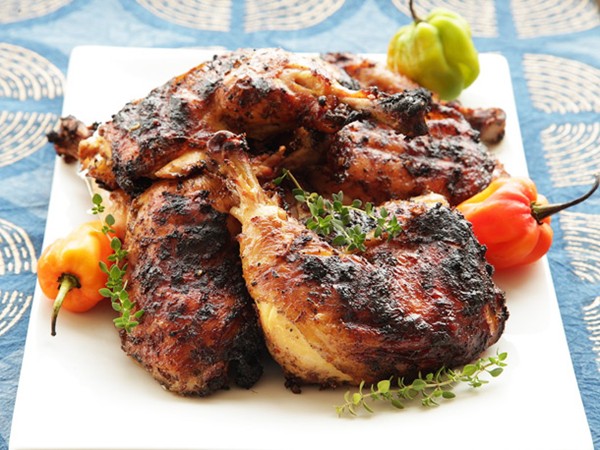Spice support: allspice
February 8, 2019 by DarcieThe appropriately-named flavoring agent allspice is extremely versatile in the kitchen, at once familiar and exotic. Most of us are familiar with its use in the sweet side of the kitchen as part of a melange of spices used in pumpkin pie, gingerbread, and other sweets, but allspice is at home in savory dishes too as indexed magazine Saveur explains.

Before we dive into the many uses of allspice, a bit of history is in order. Allspice berries are the fruit of a tropical evergreen native to the West Indies and possibly Latin America, although botanists are less sure about that. The Spanish name of the spice ispimenta, which means pepper. The berries got that name because Spanish explorers, who thought they had reached their intended destination of the Spice Islands, mistook the berries for peppercorns.
Allspice is mainly grown in Jamaica and other parts of the Caribbean, with some production in South America as well. Like many spices, allspice berries are hand-harvested. They are picked when still green and dried, turning a reddish- to purplish-brown. The berries contain tiny seeds, although most of the flavor is carried in the outer “shell” of the berry.
According to The Encyclopedia of Spices and Herbs, because the flavor of allspice has hints of cinnamon, nutmeg, mace, and cloves, with peppery overtones, people often mistake allspice for a blend of spices, hence its name. You will find allspice in the baked goods mentioned above, but in Caribbean cooking it is used more often in savory applications such as jerk seasoning. Allspice also adds its warm flavors to curries in northern India, to Middle Eastern stews, and to North African tagines. It’s often used in pickling and mulled drinks as well.
Below is a small sampling of recipes where allspice plays an important role:
- Allspice-blackberry jam cake from Blue Chair Cooks with Jam & Marmelade
- Vanilla-allspice thumbprints from Better Homes and Gardens by Dorie Greenspan
- Finnish meatballs with allspice, sour cream, and lingonberries from Falling Cloudberries by Tessa Kiros
- Warm greens & shallots with allspice dressing from BBC Good Food Magazine
- African sweet potato and peanut soup from Clean Soups by Rebecca Katz and Mat Edelson
- Jerk chicken from Serious Eats (pictured)
Categories
- All Posts (6940)
- Antipasto (2135)
- Author Articles (247)
- Book News (935)
- Cookbook Giveaways (983)
- Cookbook Lovers (257)
- Cooking Tips (109)
- Culinary News (299)
- Food Biz People (552)
- Food Online (791)
- Holidays & Celebrations (272)
- New Cookbooks (149)
- Recipes (1500)
- Shelf Life With Susie (231)
- What's New on EYB (133)
Archives
Latest Comments
- Pamsy on What foods do you look forward to the most for each season?
- Pamsy on How cookbooks can help build resilience
- DarcyVaughn on Danube Cookbook Review and Giveaway
- hettar7 on JoyFull – Cookbook Review & Giveaway
- eliza on What foods do you look forward to the most for each season?
- kmwyman on Rooza by Nadiya Hussain – Cookbook Review and Giveaway
- Maryd8822 on The Golden Wok – Cookbook Giveaway
- Dendav on Danube Cookbook Review and Giveaway
- sanfrannative on Rooza by Nadiya Hussain – Cookbook Review and Giveaway
- darty on Danube Cookbook Review and Giveaway